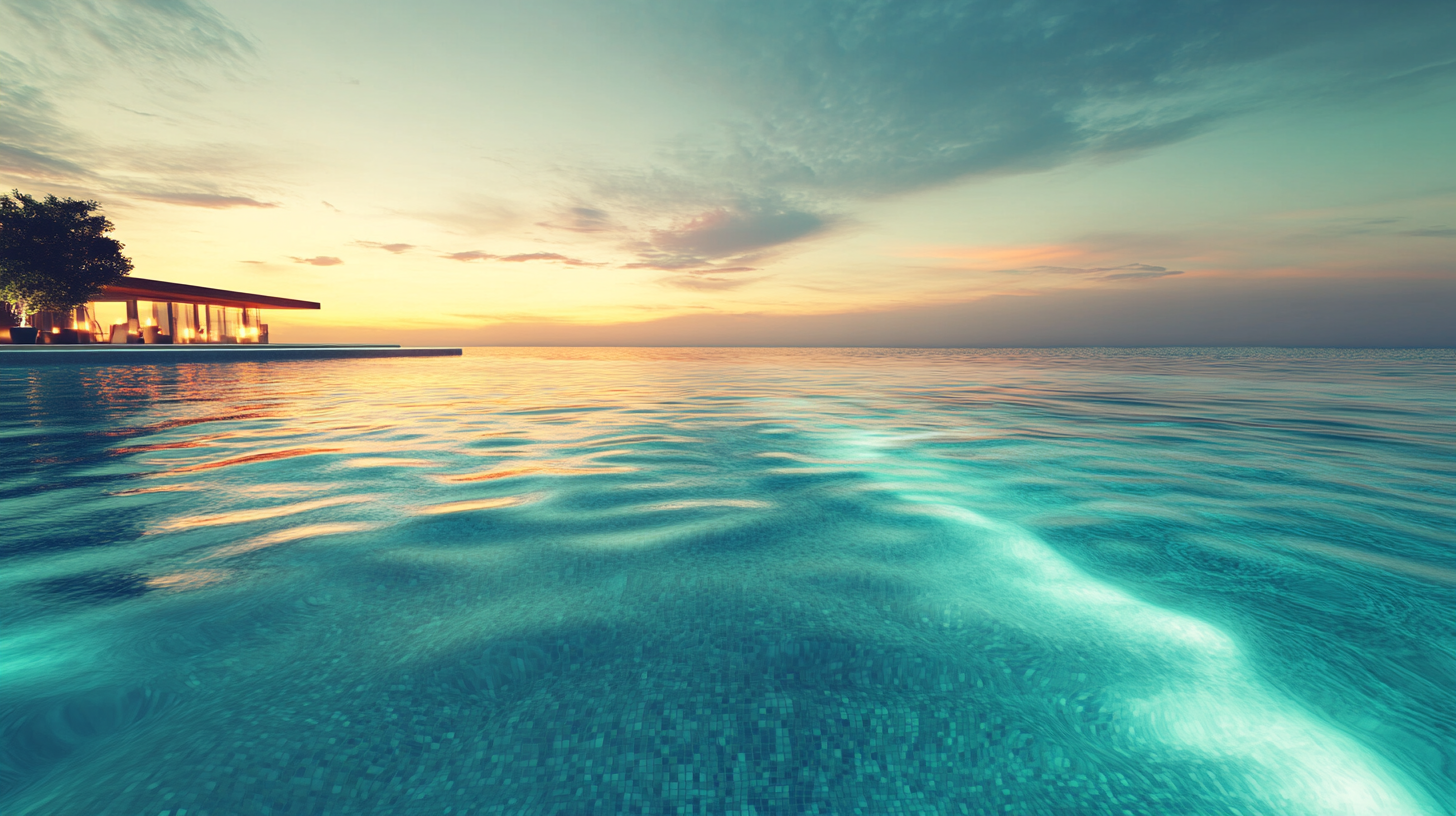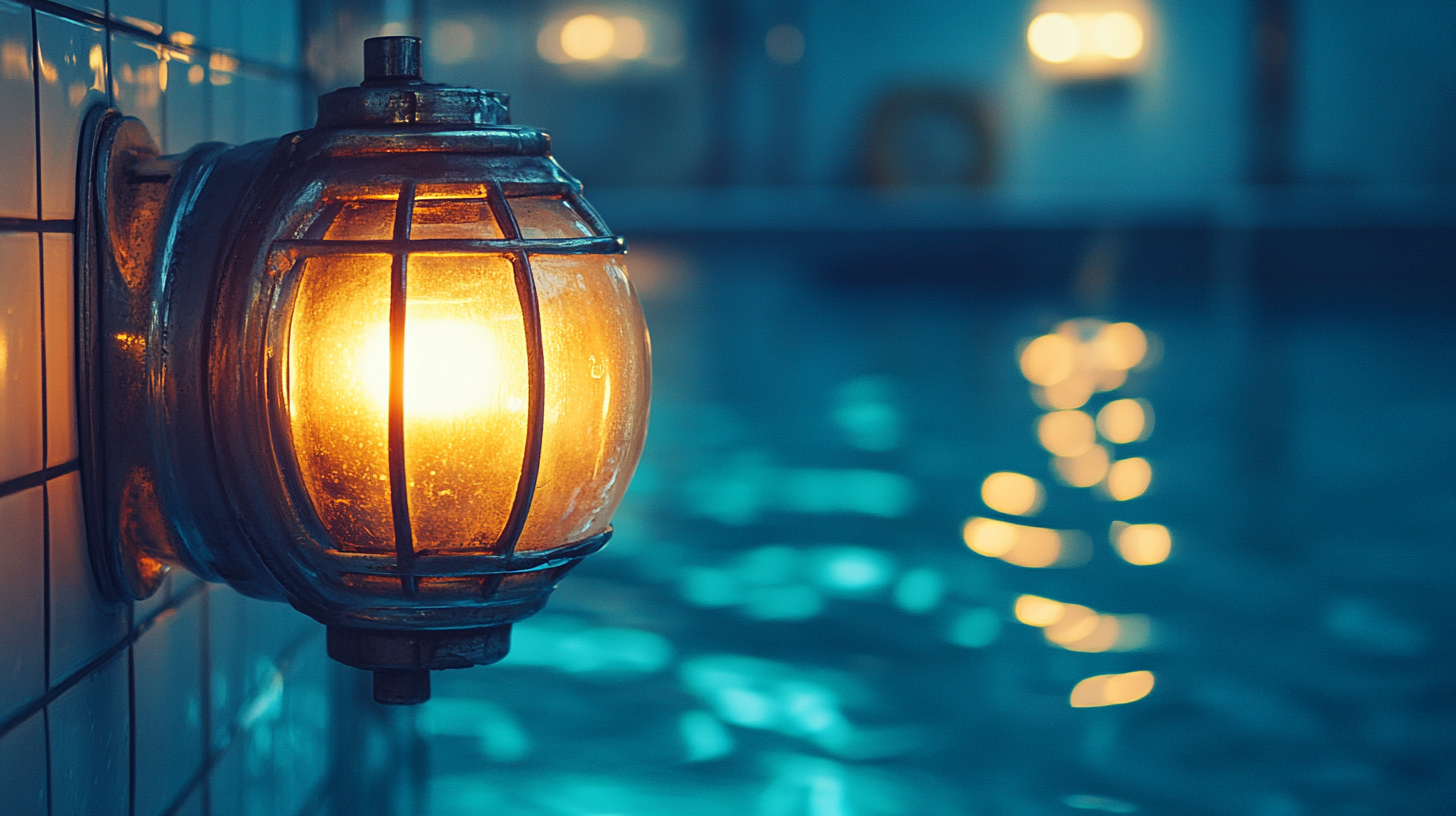Illuminating your boat dock with underwater lights
When it comes to illuminating your boat dock, utilizing underwater lights offers a myriad of benefits that can transform not just the dock itself, but also your overall water experience. One of the most remarkable advantages is the enhanced visibility. Dock lighting makes navigating around the dock much safer, especially in the dark, reducing the risk of accidents and making it easier to spot any obstacles in the water.
Another undeniable benefit is the dramatic improvement in aesthetic appeal. Underwater lights bring an enchanting glow, creating a captivating ambiance that turns an ordinary evening into something magical. Whether you’re hosting a nighttime gathering or simply enjoying a serene night by the water, the illumination adds an otherworldly charm that is hard to beat.
Beyond aesthetics and safety, underwater dock lighting can also contribute to improved security. Well-lit areas are far less inviting to potential intruders, providing an additional layer of protection for your property. This extra peace of mind means you can relax and enjoy your dock without worry.
Finally, let’s not overlook the eco-friendly options available today. Many underwater lights now come equipped with energy-efficient LED technology, which not only saves on electricity costs but also reduces your environmental footprint. Choosing sustainable lighting solutions allows you to revel in the beauty and functionality of a well-illuminated boat dock while being kind to the planet.
Choosing the right type of lights
Selecting the perfect underwater lights for your boat dock involves several key considerations that balance functionality, durability, and visual appeal. The first decision you’ll face is the choice between LED and halogen lights. LED lights have become increasingly popular due to their energy efficiency, longer lifespan, and vibrant illumination. They may come with a higher initial cost but offer savings in the long run by reducing electricity bills and maintenance expenses.
Halogen lights, on the other hand, often boast a lower upfront cost and provide a warm glow that some find more aesthetically pleasing. However, they consume more power and generally require more frequent maintenance, which can add up over time. Assessing your priorities in terms of energy efficiency, longevity, and initial investment will help guide this decision.
Next, consider the brightness and beam angle of your underwater lights. Brightness is typically measured in lumens, and higher lumens equate to more powerful illumination. The ideal brightness level depends on your specific needs—whether it’s for enhancing nighttime visibility or creating a soft, ambient glow. Similarly, the beam angle will influence how light spreads in the water. A narrow beam angle produces a focused spotlight effect, ideal for highlighting specific areas or features. A wider beam angle offers broader coverage, perfect for general illumination purposes.
The material and build quality of the lights are equally important. Marine-grade stainless steel and durable polycarbonate are excellent choices for withstanding harsh underwater conditions. Look for lights with high IP (Ingress Protection) ratings, indicating their resistance to water and dust. Opting for high-quality materials ensures that your dock lighting system remains functional and visually appealing for years to come.
Additionally, consider whether you want stationary or adjustable lights. Stationary lights offer reliability and simplicity, while adjustable lights provide versatility, allowing you to change the angle and direction of the beam as needed. If your dock experiences varying water levels or if you like to adjust the lighting based on different activities, adjustable lights could be the more suitable option.
Lastly, think about the installation process and compatibility with your existing dock infrastructure. Some underwater lights are designed for easy, DIY installation, while others may require professional assistance. Ensuring that your chosen lights are compatible with your dock’s power source and structure will streamline the installation process and prevent future issues.
Installation tips and considerations
When it comes to installing underwater lights for your boat dock, meticulous planning and proper execution can make all the difference in achieving the perfect illumination. The first step in the installation process is to gather all the necessary tools and materials. Generally, you’ll need waterproof connectors, marine-grade wiring, a transformer if you’re using low-voltage lights, and, of course, the underwater lights themselves. Investing in high-quality materials from the start can prevent many common installation pitfalls.
Begin by mapping out where you want to install the lights. Consider both their functionality and aesthetic appeal; strategic placement can ensure even illumination and highlight the dock’s best features. For example, placing lights at the edges can clearly delineate the dock’s perimeter, while lights positioned beneath the surface can cast a mesmerizing glow on the water, enhancing its natural beauty.
Next, prioritize safety and electrical considerations. Before any installation work, switch off the main power supply to avoid electrical hazards. Ensure that all wiring is marine-grade and suitable for underwater use, as regular cables could deteriorate quickly under water. Waterproof connectors play an essential role here; they keep moisture out and maintain a solid electrical connection, preventing short circuits and other issues.
When it comes to the actual placement of your underwater lights, take into account the depth and water clarity. The depth will determine the angle at which the light needs to be installed, and clearer water allows the light to travel further, enhancing the overall effect. Use stainless steel screws and mounts to secure the lights, ensuring they remain fixed in place despite the water’s dynamic nature.
If your dock faces variable water levels, consider adjustable mounting options. Fixed lights may become submerged too deep or emerge completely out of the water, reducing their effectiveness. Adjustable mounts allow you to reposition the lights as the water level changes, ensuring consistent illumination.
Once the physical installation is complete, it’s time to connect the electrical components. Begin by connecting the lights to the main power source through a waterproof junction box. Use a power distribution block if you have multiple lights to simplify the wiring process. Ensure all connections are sealed with waterproof tape or heat-shrink tubing to prevent water ingress.
It’s crucial to test your dock lighting system before wrapping up the project. Switch on the power supply and check each light for proper operation. If any issues arise, now is the time to troubleshoot. Look for loose connections, faulty bulbs, or inadequate waterproofing. Addressing these concerns early on can save you from extensive repairs later.
Consider incorporating a timer or remote-control system for added convenience. These features allow you to control the illumination without manually operating the switches. Timers ensure the lights come on at dusk and go off at dawn, saving energy and extending the lifespan of your underwater lights. Remote controls provide flexibility, allowing you to adjust the intensity and even the color of the lights to suit different occasions.
Maintenance and safety guidelines
Regular upkeep is indispensable to maintain the optimal performance and longevity of your dock lighting system. Regularly inspect the lights for any signs of wear and tear, such as corroded wiring, broken seals, or damaged bulbs. These elements are particularly prone to deterioration due to their constant exposure to water and varying temperatures. By promptly addressing minor issues, you can prevent more significant problems that could necessitate costly repairs or replacements.
Part of the routine involves cleaning the lights to ensure maximum illumination. Over time, algae, sediment, and other marine growth can accumulate on the surface of the underwater lights, diminishing their brightness. Use a soft brush or sponge with a mild, biodegradable cleaner to scrub away any build-up. Avoid abrasive materials that could scratch the light’s surface, and make sure to rinse thoroughly to remove any cleaning residues that might pollute the water.
Electrical safety should be a top priority in your maintenance routine. Regularly check all connections to ensure they remain waterproof and secure. Waterproof connectors and marine-grade wiring are designed for durability, but constant vigilance can ward off potential hazards like short circuits or electrical faults. Always turn off the power supply before conducting any maintenance work to avoid the risk of electric shock.
To prolong the life of your lighting system, it’s advisable to periodically replace the seals and gaskets. These components are crucial for keeping water out of the electrical parts. Over time, they can wear out or become brittle, compromising their effectiveness. Regular replacement ensures that your lights remain watertight and functional.
For docks situated in areas with particularly harsh weather conditions, seasonal checks are recommended. Before winter sets in, inspect the entire lighting system for vulnerabilities that could be exacerbated by freezing temperatures and ice formation. Similarly, a thorough check in the spring can identify and address any damage that occurred over the winter months.
Maintain a log of all maintenance activities, noting the dates and the specific tasks performed. This log can be invaluable for tracking the health of your dock lighting system and planning future upkeep. It also serves as a useful record if you need to claim any warranties, demonstrating that the lights have been properly maintained according to the manufacturer’s guidelines.
In addition to routine maintenance, be mindful of local regulations related to underwater lighting. Some jurisdictions have specific guidelines regarding the installation and operation of dock lights to protect marine life and water quality. Adhering to these regulations not only ensures legal compliance but also contributes to the preservation of the aquatic environment.
Lastly, consider investing in a professional maintenance service for a comprehensive inspection and upkeep of your dock lighting system. Professionals can identify and address issues that might not be immediately apparent to the untrained eye, offering an extra layer of assurance that your lights will function flawlessly.
Enhancing aesthetics with color options
Imagine the mesmerizing scene of your boat dock bathed in a kaleidoscope of colors, creating an enchanting underwater spectacle that captivates everyone who sees it. The versatility offered by color options is one of the most exciting aspects of underwater lighting. Not only can it transform your dock into a visually stunning focal point, but it also allows you to customize the ambiance to suit any occasion or mood.
One popular trend is using RGB (Red, Green, Blue) lights, which offer a full spectrum of colors. With RGB technology, you can switch between different colors or even program dynamic sequences that transition smoothly from one shade to another. This capability is perfect for setting a festive atmosphere during parties or creating a serene, calming environment for a quiet evening by the water. Imagine hosting a Fourth of July celebration with your dock illuminated in shimmering red, white, and blue hues, or accentuating a romantic dinner with soft, subtle pastels.
For those who prefer a more simplistic approach, monochromatic options are equally stunning. White lights provide a clean, elegant look, enhancing visibility and safety while highlighting the natural beauty of the water and dock structure. Blue lights are another favorite, offering a tranquil, ocean-like glow that makes your boat dock feel like an exotic getaway. Green lights, on the other hand, can create an ethereal ambiance, reminiscent of a lush, underwater forest. Each color brings its unique charm, allowing you to craft the perfect visual scenario for your dock.
Incorporating colored lights isn’t just about aesthetics, though. It can also enhance functionality. Different colors penetrate water to varying depths, impacting how well they illuminate the water body. For example, blue and green lights tend to travel further in water compared to red or yellow. This means that if your goal is to light up a larger area beneath your boat dock, opting for blue or green lights could be more effective.
Moreover, color temperature can play a crucial role in visibility and highlighting underwater features. Warm color temperatures, often in the red or yellow spectrum, create a cozy and inviting atmosphere, but they may not penetrate the water as deeply. Cool color temperatures like blue or green, with their higher wavelengths, often offer better penetration and can illuminate more of the underwater environment. This difference can be particularly useful for anglers, as certain fish are known to be attracted to specific light colors, enhancing your fishing experience.
Accent lighting is another technique you can employ to make your boat dock stand out. By mixing and matching different colors and light placements, you can create stunning visual effects that highlight the dock’s architectural features. Accent lights can be used to draw attention to steps, railings, or pathways, providing both aesthetic appeal and functional illumination. For instance, illuminated steps not only look impressive but also make it safer to navigate the dock at night.
Integrating smart control systems allows for even greater flexibility and creativity. Many modern underwater lights come with remote control or smartphone app compatibility, enabling you to adjust colors and brightness levels effortlessly. Some systems even offer pre-programmed lighting scenes or custom modes, giving you endless possibilities to explore. Whether it’s a vibrant, multi-color display for a lively gathering or a steady, single-color glow for a quiet evening, smart controls make it easy to achieve your desired effect at the touch of a button.
Environmental considerations are also important. Choosing energy-efficient LED lights helps reduce electricity consumption, and many options now come with eco-friendly features such as recyclable materials and low heat emission. By opting for sustainable lighting solutions, you can enjoy the beauty of a well-lit boat dock while minimizing your ecological footprint.
The array of color options available for underwater dock lighting opens up a world of possibilities. From enhancing the aesthetic appeal to improving functionality and safety, the right color choices can significantly elevate your dock’s overall experience. So, dive into the colorful world of underwater illumination and let your boat dock become the jewel of the water under the shimmering night sky.


